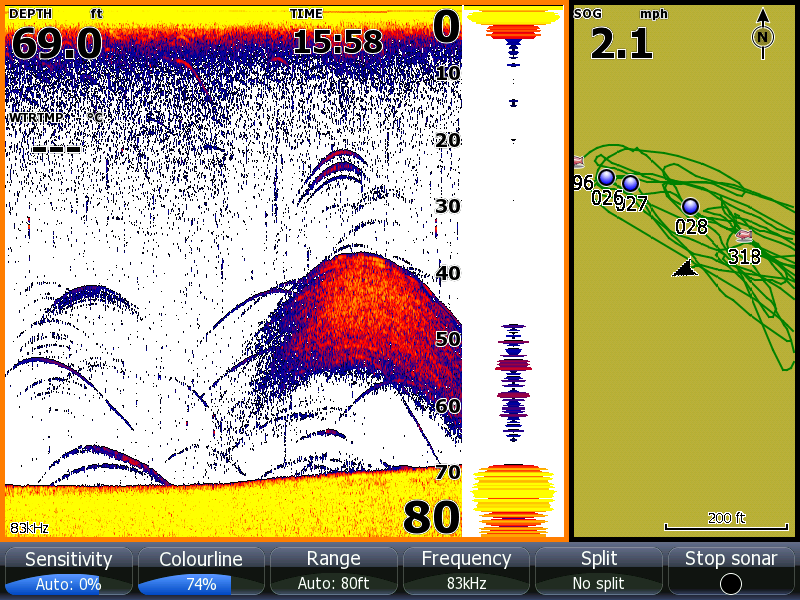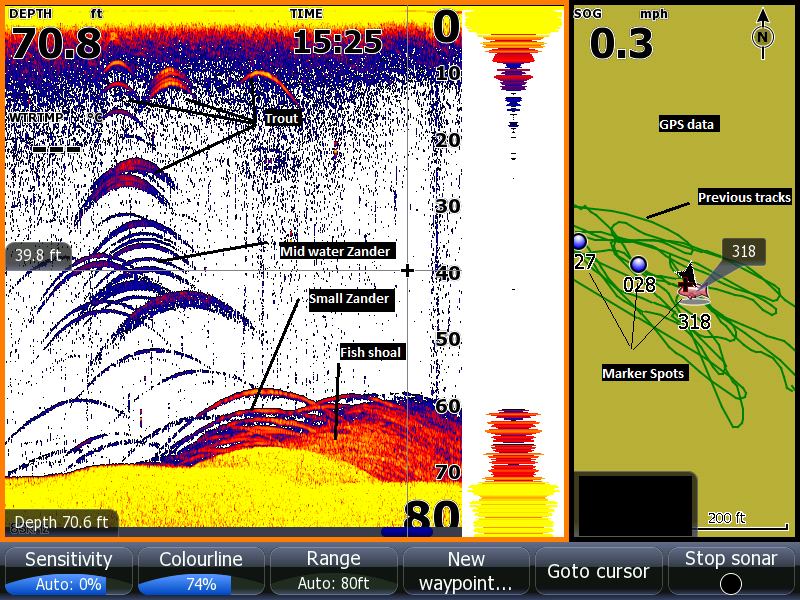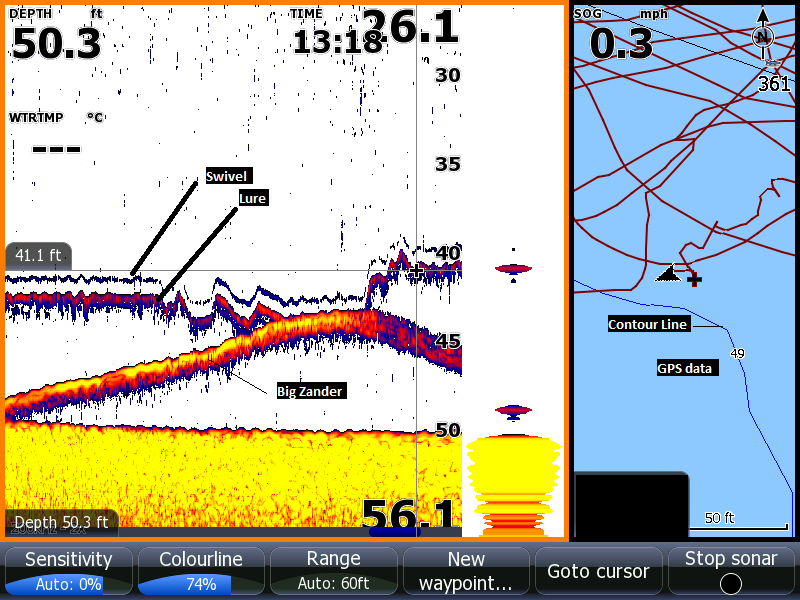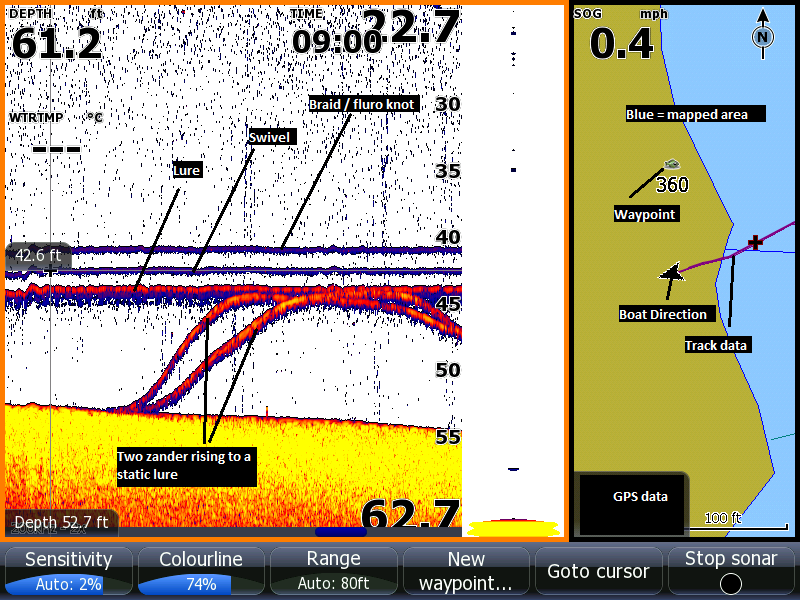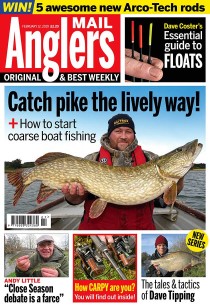Deciphering Fish Finders – Part 3
The standard echo sounder is a view that is rarely used, with the preference being for down scan or side imaging, but this can be a massive mistake – especially when fishing in deep water or for individual fish. Despite how good imaging can be, a standard echo sounder is still more effective at showing fish when you know what you are looking for. This is because an echo sounder works in a slightly different way from an imager, and it relies more on the density differential between the water and the fish’s gas bladder. This all sounds very complex, but what it means is that individual fish show up quite clearly when looking at the raw data.
In this image above we can clearly see several individual fish in the water column, these are shown by arches on the screen. These arches are produced due to the cone angle that the transducer produces, and how the fish moves in and out of this cone. You don’t really need to know why arches are made, just that if you are seeing them they are likely to be fish!
The colour of the return is also important as it shows the strength of the sound wave returning back to the unit, which in layman’s terms means the bigger the fish the bigger the return, which is likely to be orange or yellow.
This is not always foolproof though as a fish close to the transducer will give a bigger return and hence you will get a “fake yellow”. As the fish get deeper you need a very big fish to produce a yellow return.
When you get a lot of fish together then the returns will merge, hence the blob that is a fish shoal in the bottom right corner.
Using a standard echo sounder it is possible to target individual fish. In the image above you can see a very large zander coming up to inspect a lure that is presented to it. You can tell it is a big fish due to the depth of the return and its colour. The lure and swivel also show up as these have a big return due to the metal in them. In this case the zander rises up from the bottom, inspects the lure and then drifts back again, which happens more often than I like it to!
In this image you can see two zander rising from the same spot to look at a static lure. When zander are tight on the bottom like this it can be hard to see them, as the echo sounder struggles to differentiate what is lake or river bottom and what is fish. This is called “bottom separation” some finders are better at it than others. But it’s a point to remember that just because you don’t see anything on the echo sounder doesn’t mean that there are not any fish there. Again the lure, swivel, and in this case a knot in the line, are also shown as horizontal lines.
This image shows a zander being returned. As you can see the fish is returned at the surface and quickly shoots back down to a depth it feels comfortable at, which isn’t right on the bottom as you would think.
In all the images I also run a small GPS screen concurrently with the echo sounder, you need to do this as the two work in tandem, in that as soon as you see a fish or group of fish you can mark them on the GPS and put the boat back over them.
Hopefully these articles have gone some way to answering all your echo / imaging questions. As you can see, with a bit of practice using a good fish finder can really open your eyes to what is going on in the underwater world.
So don’t be frightened of new technology, embrace it and catch some fish!
